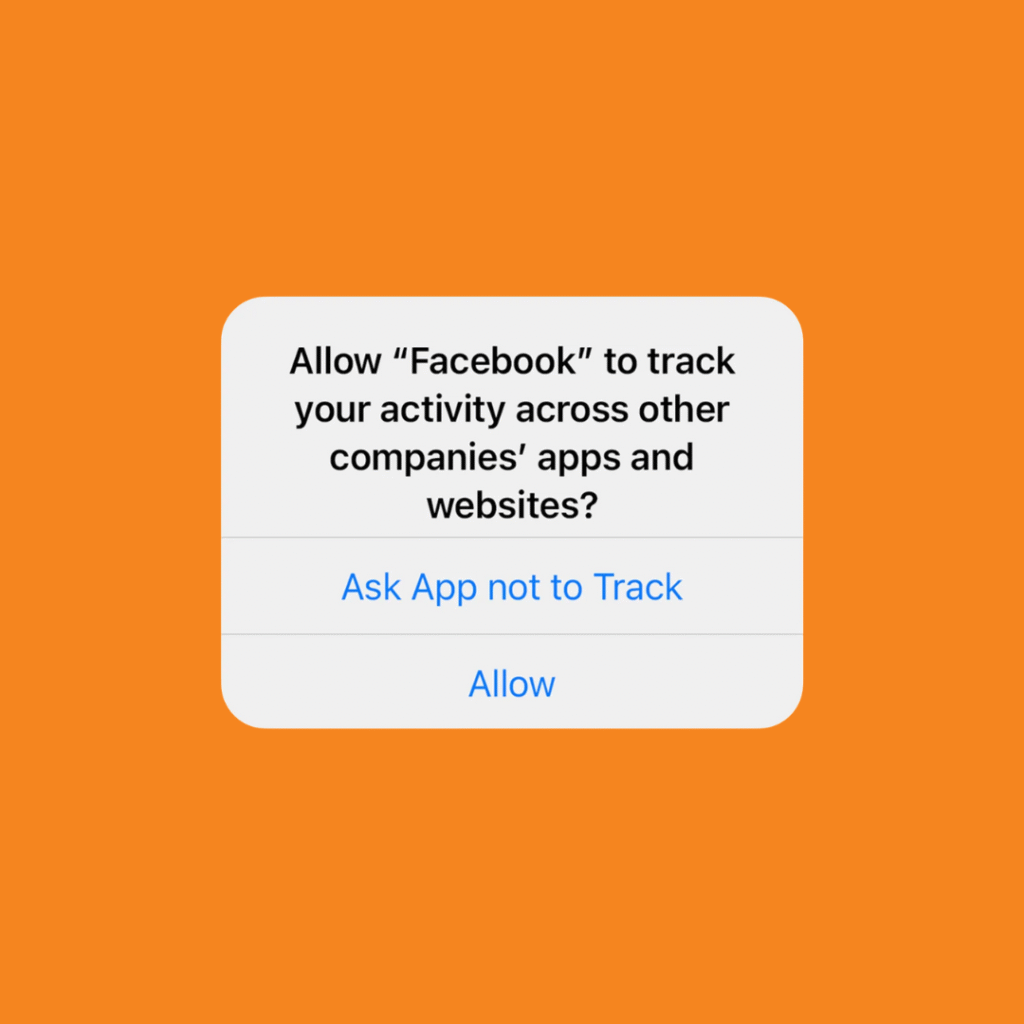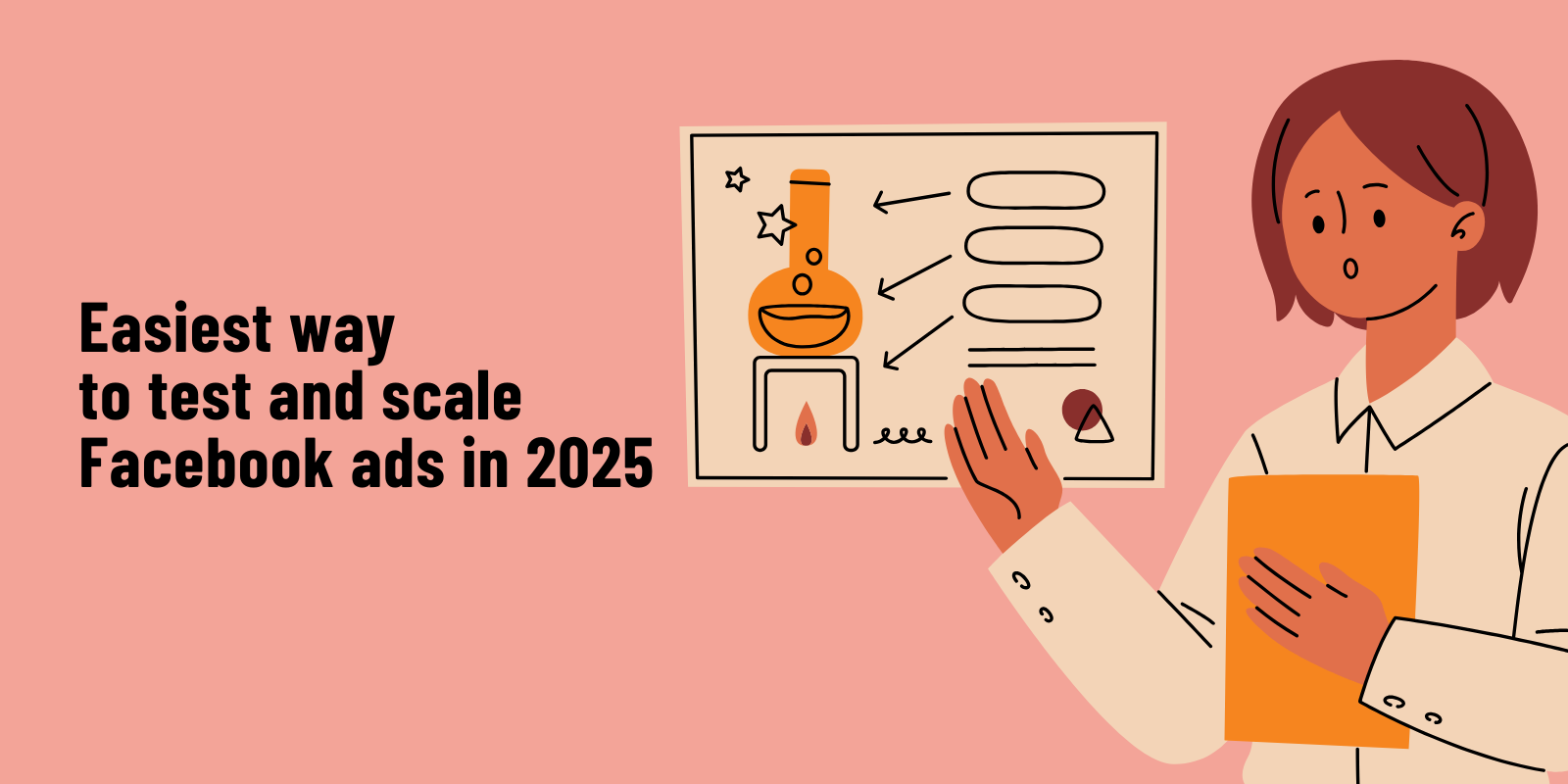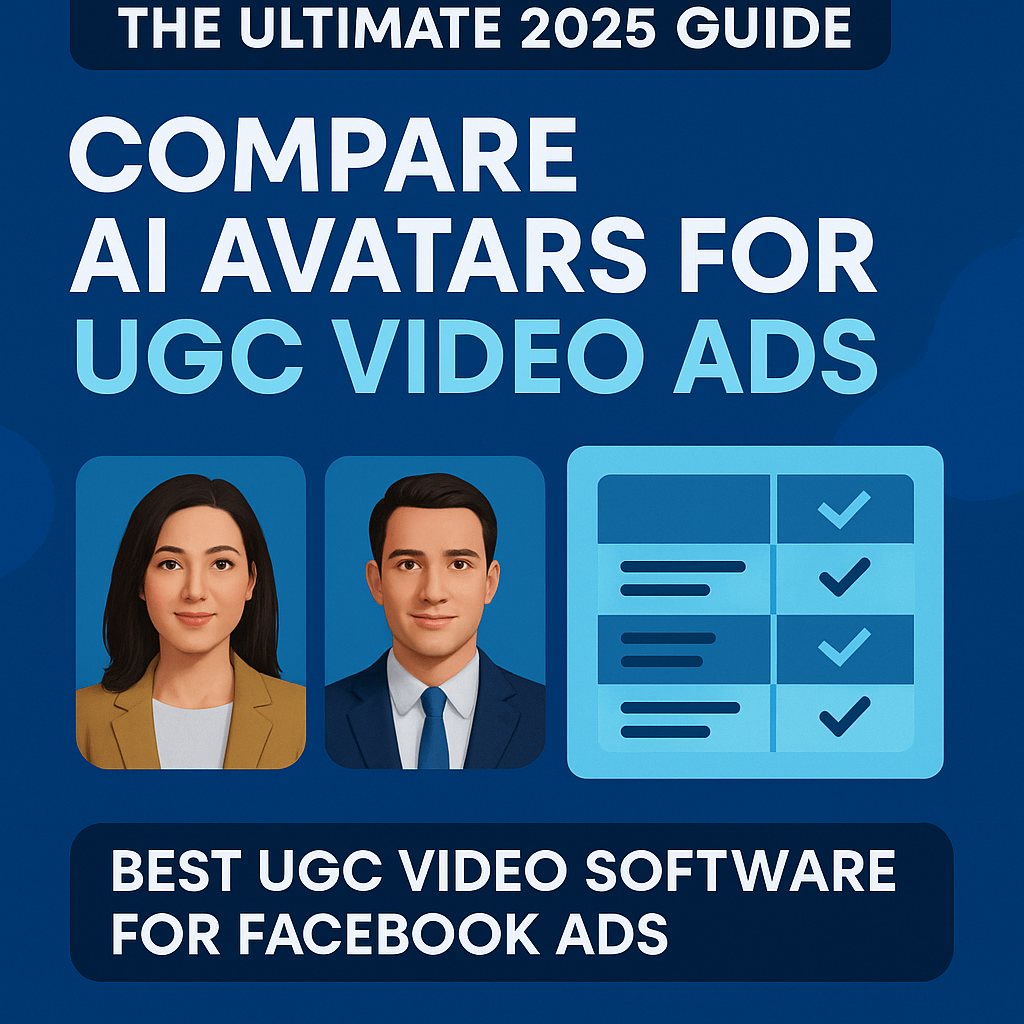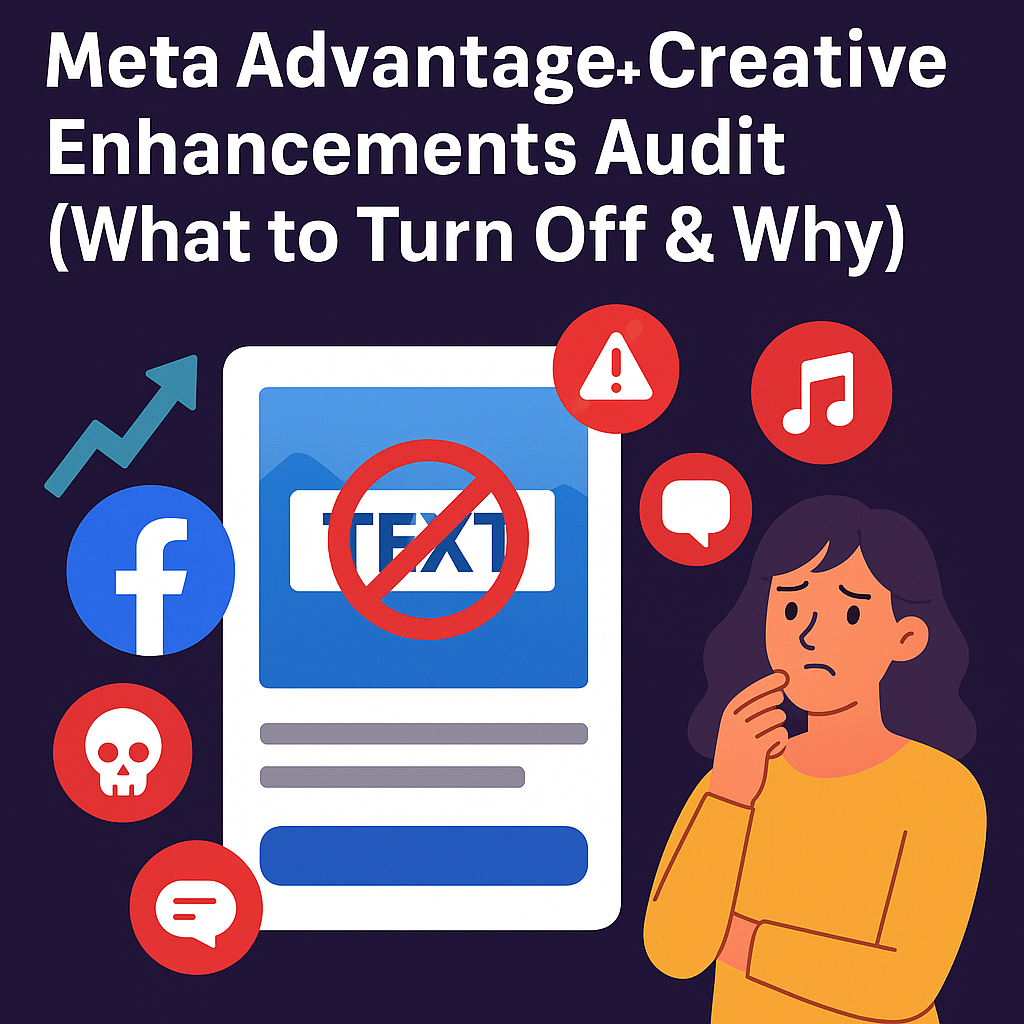Creative testing is no longer optional if you want to run high-performing Facebook ads in 2025. The right Facebook ad creative testing strategy can mean the difference between profitable scaling Facebook ads and campaign failure. Proper creative testing is crucial if you want reliable results and to consistently identify winning creatives.
Methodical testers will pull ahead, while casual advertisers will fall behind. That’s what I want to help you with.
Table of Contents
Why Facebook Ad Creative Is Critical in 2025
The Facebook ads landscape has changed dramatically. With rising CPMs and fierce competition for attention, your creative is the #1 factor determining your success.
The Algorithm’s Evolution in 2025
Meta’s 2025 algorithm is more AI-driven than ever. It rewards creatives that spark engagement and match users’ interests. That means your creative matters more than your targeting. Meta’s AI-driven ad solutions are becoming more advanced, helping businesses improve performance and reduce manual efforts. For example, AI improvements have led to a 7% increase in time spent on Facebook and 6% on Instagram. Furthermore, advertisers using Generative Ads Recommendation (GEM) on Facebook Reels have seen up to a 5% increase in ad conversions. This underscores the power of Advantage+ creative testing when leveraging Meta’s AI capabilities.
The Impact of Privacy Updates (Conversions API, First-Party Data)
Evolving privacy regulations, particularly audience targeting post-iOS 14.5, have reduced signal fidelity. When the algorithm has less granular data, a captivating ad creative can overcome targeting limitations by appealing to a broader segment. It helps draw in the right users—even without perfect targeting. Server-side tracking via Conversions API helps recover some lost data, making the initial creative hook even more valuable.
If you’re navigating tracking limitations post-iOS, we recommend reading our deep dive on mastering Meta ad attribution and Conversions API best practices.

The Attention Economy
Users are constantly bombarded with content. Your ad has mere seconds to capture attention as users scroll rapidly. Short-form video like Reels continues to dominate, making scroll-stopping creative paramount. Authentic, engaging visuals and compelling narratives break through the noise.
Curious what types of ad hooks drive the highest engagement? Here are 16 Meta ad hook formulas that convert in 2025.
The Cost of Inaction
Ignoring a structured ad iteration strategy leads to wasted ad spend and missed opportunities for profitable scaling Facebook ads. Without understanding what resonates, you risk creative fatigue, stagnant campaigns, and ultimately, a low ROAS.
Facebook Ad Creative Testing Framework: 3 Phases to Find and Scale Winners
At Metalla Digital, we’ve developed a framework that consistently identifies winning creatives without wasting budget. This framework breaks down creative testing into three distinct phases:
Phase 1: Pre-Flight Testing – Identifying New Winners
The biggest mistake advertisers make? Testing brand-new creatives against old winners. Legacy ads have accumulated pixel data, engagement signals, and social proof, creating an unfair advantage.
Instead, start fresh: test new ads against each other. That’s the only way to get a clean signal on creative quality. Below are five effective testing setups—each suited to different budgets and control preferences.
1. ASC+ Campaigns (Maximum Budget Efficiency, Minimum Granularity)
Best for: Small accounts with limited budgets who want Meta’s AI to do the heavy lifting.
ASC+ campaigns let Meta optimize placements and targeting at scale, so you can test 5–10 new creatives in a single campaign. While it’s efficient, you won’t get detailed performance breakdowns per ad. The algorithm will rapidly favor early winners, potentially leaving some creatives under-tested.
Pros: Easy setup, strong for broad testing
Cons: Limited insight into why certain creatives perform better
2. CBO with 1 Creative per Ad Set (Balanced Automation with More Control)
Best for: Brands that want Meta to help optimize spend while still isolating creative performance.
With CBO, you set the budget at the campaign level, and Meta distributes it across ad sets. If each ad set features a different creative, you can see which one is favored, but Meta still retains control over spend allocation, which can obscure the results.
Pros: Budget-efficient, solid for mid-tier spenders
Cons: Some creatives may not get enough impressions to draw conclusions
3. ABO with 1 Creative Concept per Ad Set (High Accuracy, High Oversight)
Best for: Advertisers that want complete control and fast feedback.
With ABO, you assign budgets directly to each ad set, ensuring every creative gets equal testing weight. This method is ideal when you need accurate, apples-to-apples comparisons across multiple creative directions or formats.
Pros: Direct comparison, faster learning
Cons: Requires active monitoring to prevent waste on underperformers
4. CBO + Variants (Great for Iteration-Based Testing)
Best for: Medium-sized accounts testing different versions of a strong concept.
Each ad set can feature a creative theme, such as “UGC Testimonials” or “Problem/Solution Videos,” with a few variants within it. Meta will optimize within those ad sets. To manage risk, set automated rules (e.g., pause an ad set after it spends 2x your target CPA without conversions).
Pros: Efficient for variation testing, AI-assisted scaling
Cons: Less ideal for testing entirely different creative concepts
5. Cost Cap Testing (Advanced Strategy for High-Spend Accounts)
Best for: High-volume advertisers with clear acquisition targets and large budgets.
Each creative is placed in its own ad set within an ABO campaign, paired with a Cost Cap bid strategy. Meta aggressively seeks conversions at or below your target CPA. This forces creatives to prove their value under strict efficiency thresholds.
Pros: Precision testing at scale, excellent for budget discipline
Cons: Requires well-defined CPA targets and sufficient budget to exit the learning phase
What Metrics to Watch
In Phase 1, you’re identifying creative potential, so focus on upper- and mid-funnel signals:
- CTR (Click-Through Rate): The Healthy range is 0.90%–1.60% in 2025
- CPM (Cost Per Mille): Can indicate ease of delivery
- ThruPlays & 3-Second Views: Critical for video-based creatives
- Engagement: Likes, comments, and shares are still valuable intent signals
- Pixel Events: “View Content” and “Add to Cart” are strong early indicators
Your Goal in Phase 1
Shortlist 1–2 creatives that outperform the others on engagement and attention metrics. These are your new challengers ready to face off against your current top ads in Phase 2.
| Testing Type | Accuracy | Cost-Efficiency | Best For |
|---|---|---|---|
| ASC+ | ★ | ★★★ | Small accounts |
| CBO (1/Ad Set) | ★★ | ★★★ | Budget control with AI |
| ABO (Variants) | ★★★ | ★★ | Speed + Control |
| CBO + Variants | ★★ | ★★★ | Balanced testing |
| Cost Cap | ★★★ | ★★★ | High-volume scaling |
For more granular guidance on evaluating your video performance, see our breakdown of essential video ad metrics in 2025.
Phase 2: Validating New Creatives Against Existing Winners
Once you’ve identified your top-performing new creative, it’s time for the real test: can it outperform your current best ad? Many advertisers skip this phase or become discouraged when the new ad doesn’t immediately outperform a legacy one. However, this step is crucial in determining whether a new concept is truly scalable or just a lucky run.
Below are three testing methods to validate whether your new creative is strong enough to replace or complement your existing winner.
1. CBO with Old vs. New (Quick Comparison with Budget Efficiency)
Best for: Smaller budgets or rapid validations.
In this setup, you place your old winning creative in one ad set and the new challenger in another, under the same CBO campaign. Meta’s algorithm will naturally shift more budget toward the better performer. While this is fast and efficient, it’s less precise, as Meta may quickly prioritize one over the other before the new ad has fully exited the learning phase.
Pros: Easy to implement, fast feedback
Cons: Less accuracy due to algorithmic budget reallocation
2. ABO Head-to-Head (Controlled, Clean Testing)
Best for: Mid-sized budgets seeking clean data.
Use an ABO campaign with two ad sets: one for your proven winner and one for the new creative. Assign equal daily budgets to both. This ensures a direct apples-to-apples comparison without Meta interfering in the distribution of spend. It’s a more controlled way to validate performance.
Pros: High accuracy, clean data
Cons: Slightly higher cost and requires closer monitoring
3. Cost Cap Comparison (High Accuracy, High Volume)
Best for: Advanced advertisers with large budgets and firm CPA goals.
Place both creatives in the same ad set using a Cost Cap bid strategy. This forces Meta to optimize both ads under strict CPA constraints. It’s highly effective when you have clear benchmarks for acquisition cost and need tight control over spend.
Pros: Forces performance efficiency, great for scale
Cons: Demands a high budget and data volume to stabilize
What to Monitor in Phase 2
This phase is all about conversion efficiency. Watch these core metrics:
- CPA (Cost Per Acquisition)
- ROAS (Return on Ad Spend)
- Cost Per Lead or Sign-Up (for lead gen)
- Purchase Value / AOV Impact (for eCom)
A strong ROAS benchmark in 2025 is around 2.87:1, but it varies by industry.
What Success Looks Like
The new creative doesn’t always need to beat the old one. If it delivers comparable performance at a similar CPA or ROAS, it’s still a win. Diversifying your creative pool prevents fatigue and opens up new audience segments. Look for signs that the new ad is performing well, and then prepare to scale it up in Phase 3.

Scaling Facebook Ads: What to Do with Winning Creatives
When your new creative proves itself, it’s time to scale winning creatives. This phase is where you’ll reap the rewards of your ad creative testing:
- Begin scaling Facebook ads immediately: Don’t hesitate once you’ve validated performance. Winning creatives have a shelf life.
- Add to Fatigued Ad Sets: Integrate the new winning creative into existing, high-performing ad sets that might be experiencing creative fatigue. Learn more in our full guide to combating Facebook ad fatigue.
- Don’t Pause Old Creatives (Immediately): Unless an old creative’s performance significantly drops, keep it running alongside the new ones.
- Patience with AI: Allow CBO and ASC+ campaigns time to re-optimize with new creatives.
- Maximize Performance Quickly: Gradually increase budgets (10–15% daily) or expand to new, relevant audiences. Keep ad frequency to under 2–3 times a week for prospecting.

The Unyielding Importance of Creative Production and Analysis
While this framework helps identify winners, the quality of what you’re testing remains the foundation of success.
Quality Over Quantity (But Quantity Helps Testing)
Even with a robust framework, poor performance creatives won’t win. Focus on compelling visuals, clear messaging, and strong hooks. This testing process fuels your broader creative iteration strategy.
Dose is testing over seven unique UGC videos featuring Derek Fisher, each using different hooks, scripts, and camera framing. Rather than guessing, they used performance data, CTR, scroll-stopping power, and conversions to identify the top performers. The best creatives stayed in rotation, while the rest were retired. This structured approach transforms creative testing into a repeatable and scalable growth lever. This is exactly how you should be testing Facebook ads in 2025.

Leveraging Creative Analysis Tools
Tools like Motion, Superads, and Bestever provide deeper insights into what’s working, including the first 3 seconds, CTAs, and emotional tone. These insights fuel stronger iterations.
User-Generated Content (UGC) and Short-Form Video
UGC and short-form video (especially Reels) continue to dominate. Authentic, native-style content often outperforms polished ads. See how to scale UGC with AI in our AI UGC ad strategy playbook.
Iteration and Learning
Successes and failures both reveal what your audience truly values. Learn from every test and evolve your creative approach accordingly.
Creating a Scalable Facebook Ad Testing Framework System
The most successful Facebook ads in 2025 will come from those who create a continuous creative testing flywheel:
- Consistent production of new creative concepts.
- Structured testing using the 3-phase framework.
- Quick implementation of winning creatives.
- Continuous creative learning from both successes and failures.
This cyclical approach ensures you’re constantly adapting, optimizing, and finding new ways to connect with your audience, leading to sustained ad performance and maximizing your ROAS.
Suggested Reading for Advanced Advertisers
AI-Generated UGC Ads for Facebook: Scale Without Burnout!
How to Iterate Facebook Ads to Scale Winning Creatives
Combat Facebook Ad Fatigue: Fix What’s Burning Out Your Campaigns
Meta Ad Hooks That Convert in 2025
FAQ Section
Below are answers to the most common questions about Facebook ad creative testing, scaling Facebook ad performance, and campaign optimization in 2025.
What is the single most important factor for Facebook ad success in 2025?
Creative. With Meta’s AI optimizing delivery and rising competition, your ad creative is the primary driver of engagement and conversion.
Why shouldn’t I test new creatives against old winners immediately?
Old winners have accumulated historical data and pixel optimization, giving them an unfair advantage. Testing new-to-new provides a more accurate comparison of inherent creative potential.
What are the key metrics to watch during creative testing?
For initial testing (Phase 1), focus on engagement metrics like CTR, 3-second view rate, and CPM. For validation (Phase 2), prioritize conversion metrics such as CPA and ROAS.
How often should I be testing new ad creatives?
Continuously. The “creative testing flywheel” concept emphasizes consistent production and testing to combat ad fatigue and maintain performance, especially as audiences become saturated.
How do privacy changes like iOS updates and Conversions API affect creative testing?
While data signals are reduced, creative becomes even more critical for capturing initial attention and interest. Strong creative can compensate for broader targeting, and server-side tracking via Conversions API helps recover some lost data for optimization.
What is the role of AI in Facebook ad creative testing for 2025?
AI is fundamental. Meta’s Advantage+ campaigns and AI-driven ad solutions automate optimization across placements, targeting, and budget. Generative AI tools also assist in creating diverse ad copy and visual assets for testing.
Should I pause my old winning creatives when a new one performs well?
Not necessarily. It’s often best to keep old winners running alongside new ones. New creatives can refresh fatigued ad sets, but established winners still contribute to overall performance. Monitor closely and only pause if performance significantly declines.




